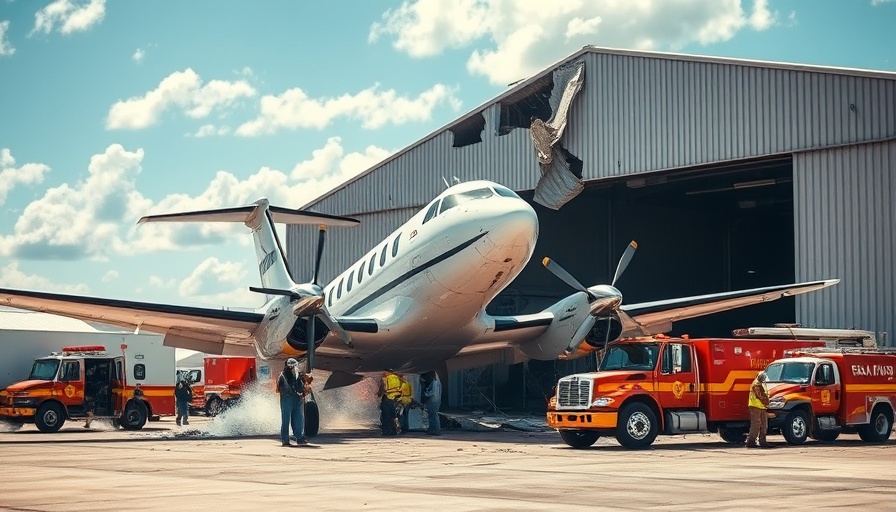
Unraveling the Details Behind the King Air Crash
On June 16, 2025, a twin-engine Beechcraft King Air E-90 made headlines after crash-landing onto the roof of a hangar at New Century AirCenter, Gardner, Kansas. The aircraft involved had a long history, having amassed nearly 11,000 flight hours and holding a valid airworthiness certificate until 2031. The pilot, an experienced Airline Transport Pilot (ATP), was navigating his aircraft towards a routine landing when disaster struck, marking the incident as both remarkable and concerning.
The Flight and Its Challenges
The flight originally departed from Butler Memorial Airport in Missouri, contradicting initial reports that pointed toward a Georgia airport by a similar name. The aircraft was well into its descent towards runway 18, cruising at around 140 knots when an engine failure occurred. Preliminary investigations suggest that the left engine lost power, leading to an emergency situation for the aircraft. While the right engine continued to function, the resulting imbalance caused the aircraft to veer to the left, ultimately leading to the crash-landing.
First Responders and Immediate Aftermath
First responders, including the Johnson County Sheriff’s Office and local fire departments, arrived promptly at the scene. The initial task was to set up a safe zone for the pilot and passenger, both of whom fortunately escaped with non-life-threatening injuries. Their swift evacuation from the aircraft, juxtaposed with the annulling presence of firefighters laying down foam to suppress leaking fuel, showcased coordinated emergency response efforts. Remarkably, no injuries were reported among the hangar staff, who must have experienced a shocking sight.
Analyzing the Safety Aspects of Aircraft Operations
This incident underscores the importance of stringent safety protocols and operational readiness for aircraft operations. The King Air had been a reliable workhorse, demonstrating the unpredictability that can come with flight operations even under certified circumstances. As investigations unfold, insights from this situation could illuminate areas for enhanced training and emergency preparedness for pilots operating older models of aircraft.
The Bigger Picture: Aircraft Safety in the Community
Accidents like this serve as vital reminders of the complexities involved in aviation safety and community interactions with local airports. Residents near New Century AirCenter might reflect on the implications of air traffic in their vicinity, raising questions about safety measures and incident preparedness. This incident, while yielding only minor injuries, could steer discussions around the operational protocols in place at small airports across the nation.
Closing Thoughts: The Future of Aviation Safety
As the aviation industry continuously strives for safety improvements, every incident presents an opportunity to reevaluate procedures and enhance training programs that prioritize emergency responsiveness. The fact that the pilot and passenger emerged relatively unscathed is a testament to proper safety measures at play. However, the industry must stay vigilant, ensuring that systems are in place to mitigate future risks.
In a world where air travel is ever-increasing, ensuring the safety of all passengers and crew should be at the forefront of all aviation discussions.
 Add Row
Add Row  Add
Add 




Write A Comment